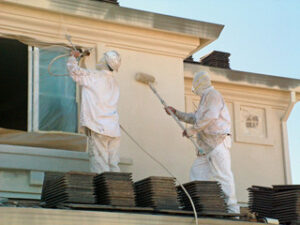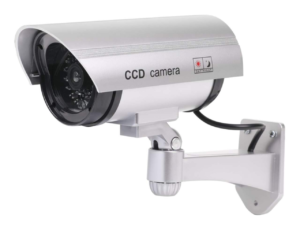Modesto House Painters have the skills, tools and equipment to get the job done right. They use proper techniques and apply paint with precision, ensuring uniform coverage and smooth finishes.

You should remove all small items from a room that is being painted, and cover furniture that cannot be moved. This will minimize the risk of breakage and protect furnishings from dust or other damage.
Painting your interior spaces is a simple way to dramatically change the look and feel of your home. It’s also one of the best ways to increase your home’s resale value. Professional house painters can add style, flair and color to your home, giving it an entirely new look.
A good home painter will have a strong focus on quality and customer service. They will be happy to answer any questions before, during and after the project is completed. They will also be able to provide references and samples of their work.
It’s important to do some research before hiring a house painter for an interior painting job. Ask friends, family members and neighbors for recommendations. You can also check online directories and websites specializing in home improvement projects for reviews and ratings of local contractors. Once you’ve compiled a list of potential painters, request estimates from each. Make sure you’re comparing estimates based on the same criteria to get an accurate comparison.
Surface Preparation
Before beginning the project, a house painter will clean all surfaces to be painted. Then they will sand them lightly to roughen the texture and improve paint adhesion. They will then wipe down all surfaces with a damp cloth, including windows and trim work (the woodwork around door and window frames). They will tape off any areas that you don’t want painted, such as baseboards and trim. Some painters use water activated tapes that will peel off with the wall when they’re ready to be removed. Others simply place a strip of rosin paper on the floor and cover it with plastic sheeting to protect it from paint spills.
The painter will then apply the primer and let it dry for several hours. Once the primer is dry, they will begin painting the walls. They will work in small sections, and blend each section with the next to avoid lap marks (lines of a different color where wet and dry paint overlap during the painting process). They will also use a specific rolling technique that ensures even coverage.
Exterior House Painters
The exterior of your home can take a beating from various factors. These include weather damage, dirt, dust, and even pests. Despite these issues, you can still boost your property’s value by regularly repainting it. This not only makes it more attractive but also protects it from other potential problems. According to the International House Painting Association, a well-maintained exterior can add up to 10% to your property’s value.
The right house painters can provide the care and attention your home needs to keep its curb appeal intact. Professionals have extensive experience in surface preparation, color selection, and painting techniques. They use quality paints that can withstand harsh conditions and last for years to come. They can also address underlying issues like mildew and rot, saving you the hassle of having to deal with them later on.
When choosing a house painting contractor, make sure that they have the necessary licensing and insurance. This includes liability insurance, worker’s compensation, and a good reputation in the industry. They should also be able to provide a warranty and references for their work. Moreover, they should have the equipment and tools to complete the job quickly and efficiently.
Painting your house’s exterior is a time-consuming task that requires meticulous prep, multiple coats, and careful clean up. In addition, working at heights and navigating challenging angles can be dangerous for individuals without proper training. This is why it’s best to leave the task to professional house painters.
The ideal time for painting a house is during early summer and fall. During these seasons, the sun is low and there’s minimal rain. Additionally, temperature variations aren’t as extreme, which can cause the paint to dry unevenly and create blemishes on the surface.
Besides, these professionals know how to properly handle ladders and scaffolding. They are also adept at navigating challenges that may arise during the project, such as hard-to-reach spots. Therefore, hiring them is the safest and most cost-effective option for homeowners who want to ensure a high-quality finish that’ll last for years. Their expertise and high-quality products will ensure that your home’s exterior will look its best for years to come.
Residential Painters
Painting is one of the best ways to add value and style to a home. Whether it is the interior or exterior of a house, a skilled paint job can transform the entire look and feel of the property and make it more appealing to potential buyers. It is therefore important to find a reliable house painter who will complete the work to your satisfaction. A good way to do this is to ask for referrals from friends and family who have used their services in the past. This will give you first-hand information about the contractor’s work ethic and quality of work.
Local house painters usually specialize in residential projects, including the interior and exterior of single-family homes. They also perform staining and detailing of architectural elements like windows, doors, and trim. They are well-versed in a variety of surface preparation techniques and apply paints using brushes, rollers, trays, ladders, and sprayers. They are familiar with a wide range of paint types and sheen levels, including oil-based, water-based, and latex-based. They also help their clients select the appropriate color and finish to achieve their desired results.
In addition to basic wall painting, professional house painters can also handle more complex tasks such as refinishing decks and fences, wallpaper removal, and power washing. They can also apply specialty finishes to wood surfaces to protect them from water and sun damage.
When choosing a house painter, it is important to check their credentials and licenses before hiring them. A licensed and insured house painter will be able to provide you with the highest quality of service while following all applicable laws and regulations. In addition, they will be able to provide you with a detailed quote that includes the exact brand and shade of paint that will be used. This will ensure that you are getting the best quality of paint for your home.
Aside from their technical skills, local house painters should also be able to communicate well with their clients and understand their vision. They should be able to guide them in selecting the right colors and finishes for their project, as well as explain how different paints will perform on specific surfaces. They should also be able to accommodate any special requests that their clients may have, such as the need to protect furniture and other belongings from dirt and dust.
Commercial Painters
Repainting the exterior and interior of a home is an important way to refresh its appearance. It also helps protect the structure from damage and prevents moisture penetration, which can lead to rot and other costly repairs. Professional house painters have years of experience with prepping, priming, and painting techniques and have an eye for what hues complement one another, so they’re a valuable resource when choosing color combinations. In addition, they’re equipped with ladders and other equipment to reach high spaces, and they have a thorough understanding of proper preparation and cleanup methods that ensure the best results.
Unlike many DIY home improvement projects, painting is a difficult task that most homeowners don’t have the tools or skills to complete on their own. Even if you are handy, painting a house requires extensive use of ladders and other equipment, and it is critical to follow proper safety procedures. Plus, the specialized paints and coatings used by professional painters aren’t readily available to the general public.
Professional painters have the knowledge and experience to apply a wide range of finishes, from flat to glossy, and can work with a variety of surfaces, including brick, stucco, and concrete. They know the right products and techniques to use in each situation, ensuring a high-quality finish that will stand up to heavy wear and tear.
A clear scope of work is an essential part of any estimate. It details what tasks the painters will perform, any materials or supplies they might need to buy or rent, and how long it is expected to take them to complete the job. Having this information in advance will help you compare estimates and avoid any surprises later on.
Before the painters arrive, be sure to move all furniture and other items from the area. This will allow them to access the walls and other surfaces and ensure they do a quality job without any disruptions to your daily life. It’s also a good idea to remove any hanging objects from the wall and cover them with bubble wrap or similar material to protect them from damage.







